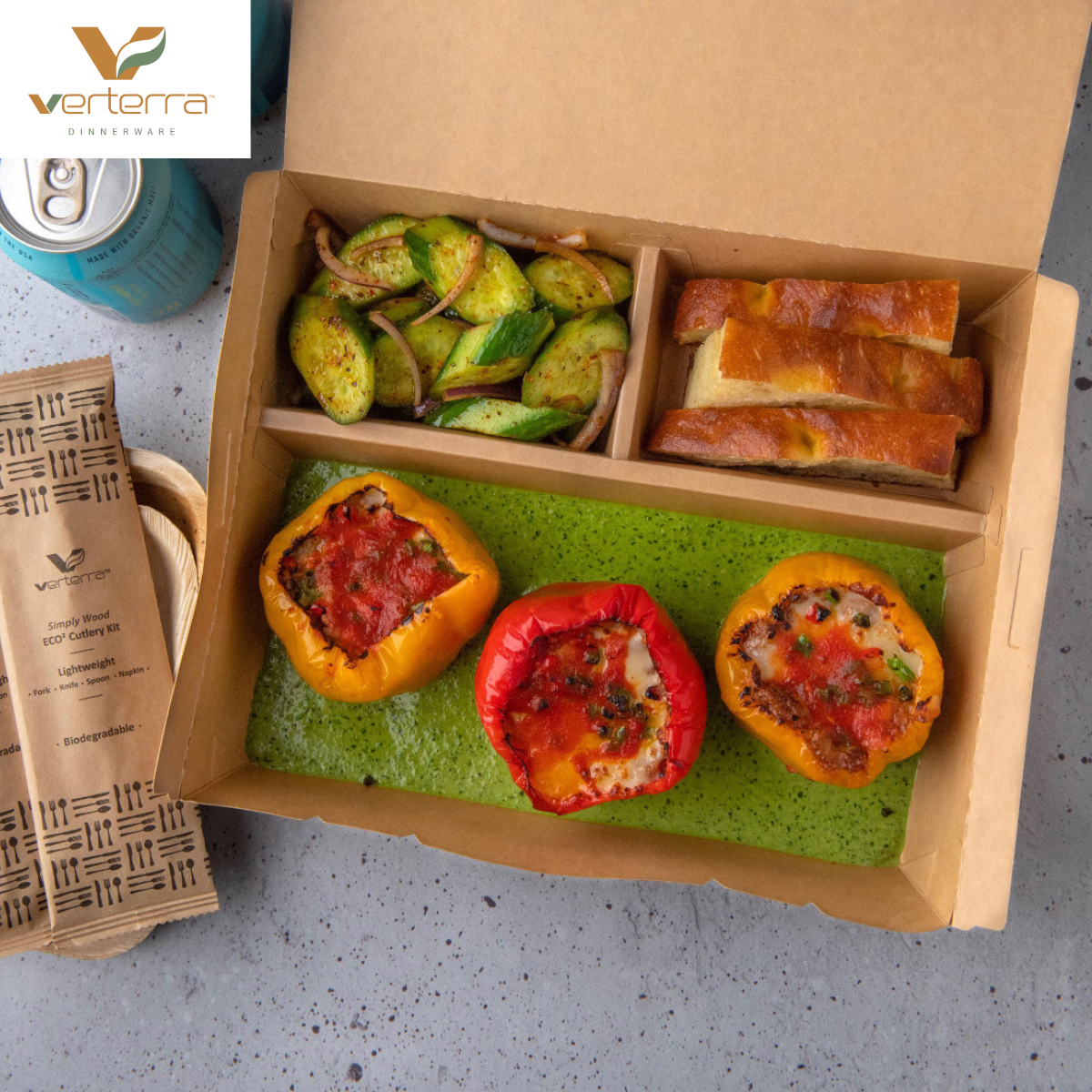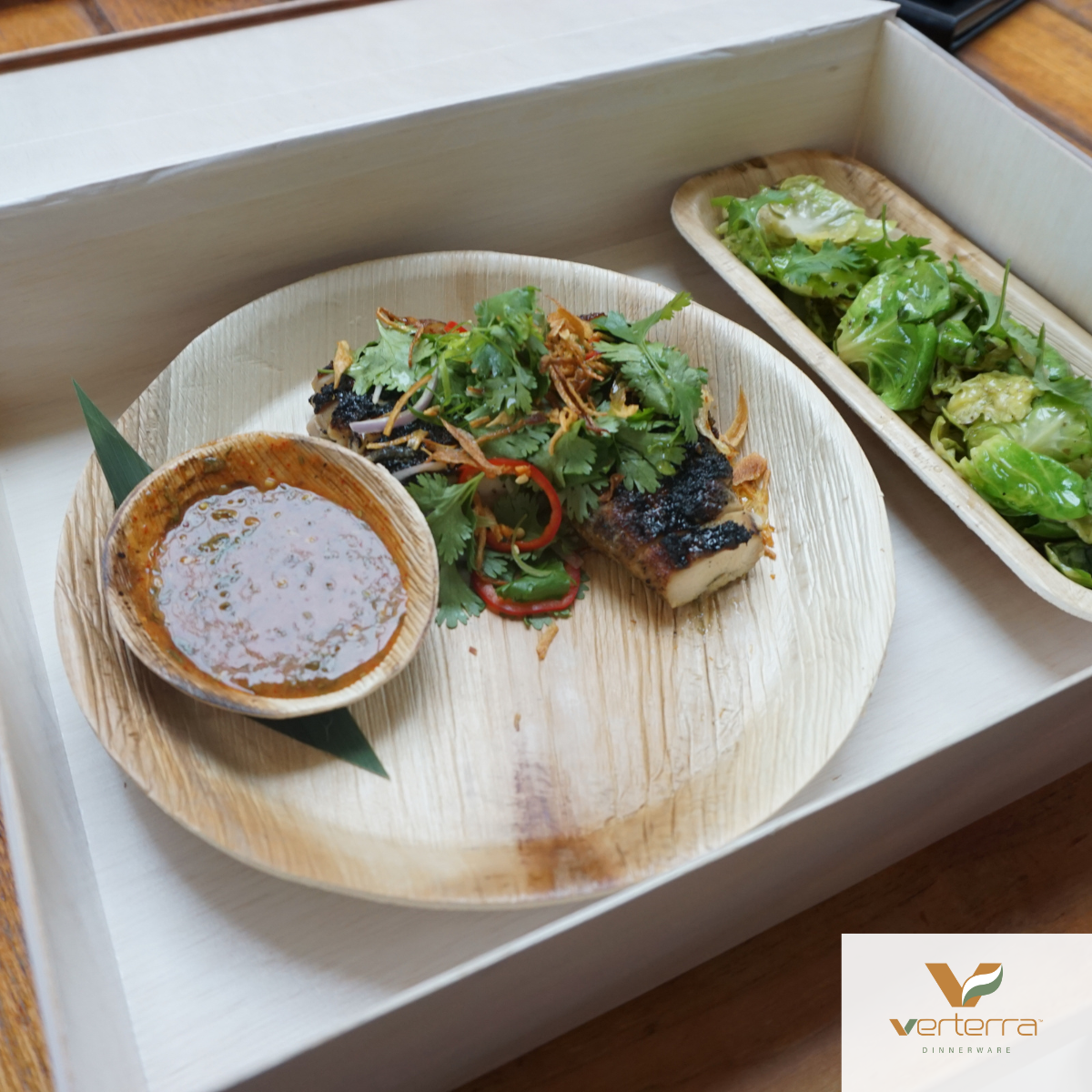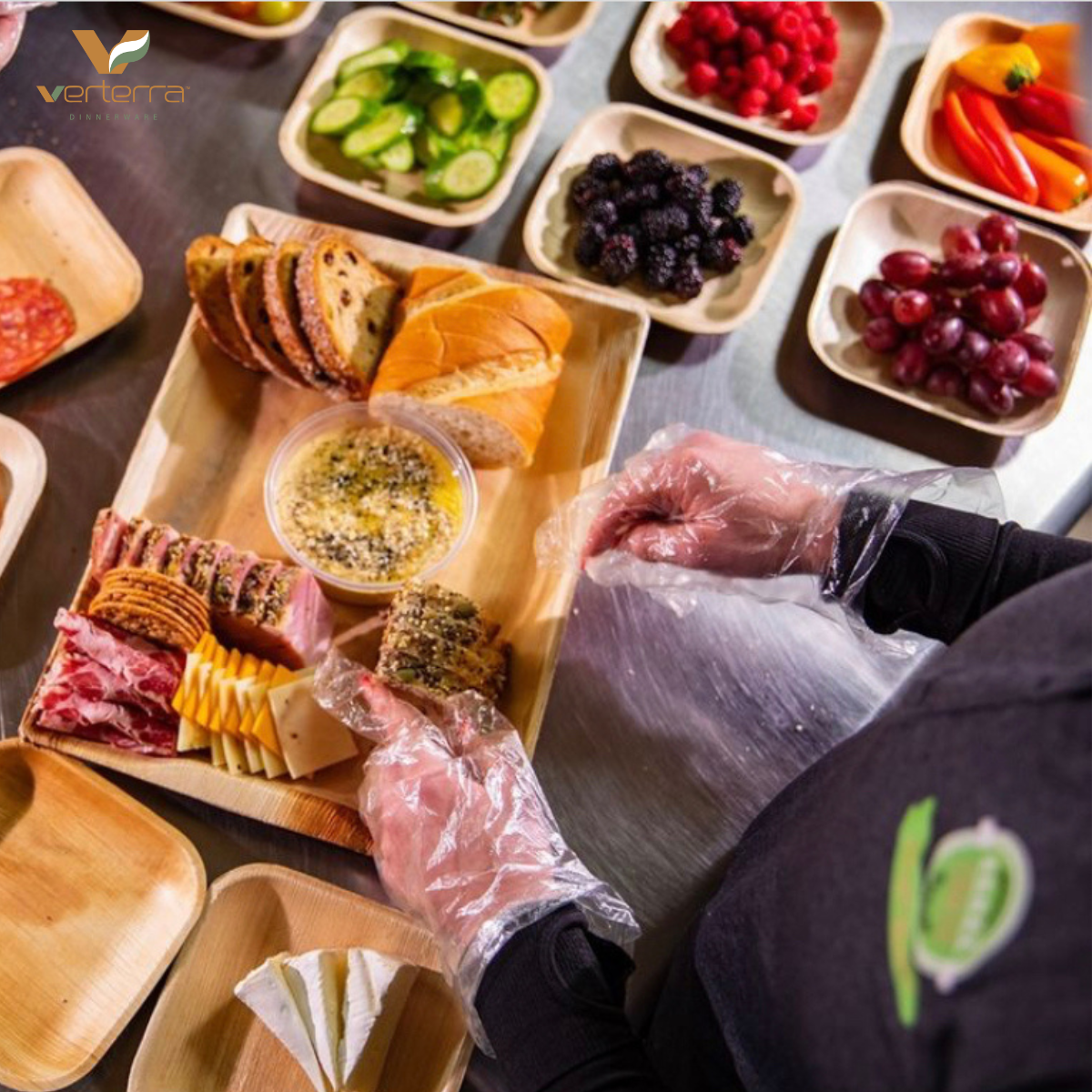
Why Eco-Friendly Take-Out Boxes Are the Smart Choice for Restaurants
Why Eco-Friendly Take-Out Boxes Are the Smart Choice for Restaurants
Take-out and food delivery services have witnessed a significant surge in popularity over the last few years, driven by factors such as busy lifestyles, urbanization, and the proliferation of Uber Eats and DoorDash. With more people opting for the convenience of take-out and delivery, the demand for packaging materials has skyrocketed. Unfortunately, this has also led to an alarming increase in single-use plastic and non-sustainable packaging. Further many of these items were originally designed for leftovers and the critical need for packaging designed for meal boxes. `Introducing eco-friendly take-out boxes is the smart choice for restaurants looking to reduce their carbon footprint, make a positive impact on the planet and comply with bills and regulations aimed at reducing plastic use.
The Real Cost of Conventional Packaging
According to the United States Environmental Protection Agency, food packaging, straws and drink cups make up 45% of the waste at landfills and contribute to about 15% of the planet's methane emissions.
Conventional take-out containers, such as Styrofoam and plastic, with 3 million tons being produced annually in the United States, have long been the go-to choice for restaurants due to their cost-effectiveness and durability. However, their social, environmental, and health impacts of Styrofoam outweigh its benefits.
A study conducted by Saint Louis University supported by the Green Dining Alliance, reveals that Styrofoam accounts for up to 30% of landfill volume, and it also adds to litter, with 20% of it finding its way into waterways. Additionally, the compounds used in Styrofoam production, such as benzene and styrene, have been associated with health risks, including neurological effects and an elevated risk of cancer. According to a financial model, the overall hidden costs of Styrofoam amount to a staggering $7 billion annually, equivalent to 1.2 cents per Styrofoam cup produced. So, next time you're looking at a Styrofoam cup, remember, it isn't as cheap as it appears!
Microplastics in Plastic Take-Out Food Packaging and Potential Health Impacts
Plastic take-out food packaging is made up of various polymers, additives, adhesives, coatings, and residues from manufacturing that can potentially have an impact on human health. In an article published in the National Library of Medicine researchers present a database of 906 chemicals linked to plastic packaging and 3377 possibly associated substances, where out of the 906 chemicals, 63 have high human health hazards, and 68 have high environmental hazards according to European Chemicals Agency classifications.
Efforts to reduce waste focus on reuse, recycling, and alternatives to plastic, but chemical safety is often overlooked. Eco-friendly packaging is also the right choice for health reasons, as it may help reduce exposure to harmful food contact chemicals, ultimately preventing chronic diseases.
Meeting Environmental Regulations and Anti-Plastic Laws
With the growing concern over plastic pollution and the environment, legislative efforts to combat this issue are gaining momentum. One of the key reasons for the shift towards eco-friendly take-out alternatives is the need to comply with environmental regulations and anti-plastic laws. As we’ve mentioned before on Verterra’s blog, in the United States, several proposed bills and regulations are aimed at reducing plastic use and promoting sustainable alternatives. These initiatives emphasize identifying single-use plastics and finding alternative materials with fewer environmental impacts, encouraging businesses, including food and beverage establishments, to reevaluate their packaging choices. Sustainable packaging not only helps restaurants avoid potential fines and penalties but also appeals to eco-conscious consumers, ultimately benefiting both businesses, customers and the environment.
Why VerTerra Sustainable Take-Out Boxes Are the Ultimate Choice
- Verterra's sustainable take-out boxes offer a comprehensive solution for environmentally responsible and customer-centric dining experiences. Make the smart choice for your restaurant's future and the planet by switching to VerTerra's eco-friendly packaging solutions today.
- Reduce Environmental Footprint: Our take-out boxes are made from materials like paperboard, palm leaves and bamboo, which are renewable resources. Choosing these materials over non-renewable plastics or Styrofoam helps reduce the carbon footprint associated with packaging production.
- Biodegradability and Compostability: Our products are biodegradable or 100% BPI certified compostable. This means they can break down naturally and return valuable nutrients to the soil, reducing landfill waste and environmental harm.
- Health and Microplastics: Eco-friendly packaging reduces the potential health risks associated with chemicals in conventional plastic packaging. Choosing Verterra promotes better health outcomes and helps prevent chronic diseases.
-
Compliance with Regulations: As environmental regulations and anti-plastic laws gain momentum, adopting eco-friendly take-out packaging positions restaurants for compliance while also appealing to eco-conscious consumers.
- Improved Brand Image and Customer Loyalty: Sustainable packaging not only aligns with regulatory requirements but also attracts environmentally conscious customers, boosting a restaurant's reputation and customer loyalty.
- Positive User Experience: VerTerra take-out boxes feature user-friendly designs, including easy-to-fold lids, secure closures, and water, oil and heat-resistant properties, ensuring that your food arrives safe and with a beautiful presentation.
Our Verterra Collapsible Boxes, crafted from balsa wood and rice paper, offer stackable convenience for seamless prepping and transportation. Meanwhile, our Verterra Paperboard Boxes, made with Kraft Paper and an RPET liner, are water and oil-proof, ensuring extended shelf life. Compared to similar products, they feature reinforced corners and modified "D-locks" for enhanced practicality and durability.
ABOUT VERTERRA
Established in 2006, our mission/vision transformed the single-use, earth damaging food packaging industry by designing eco-friendly, biodegradable, certified compostable dinnerware and packaging. Our plateware and packaging products are all made from renewable resources such as fallen palm leaves, balsa wood tree trunks, bamboo, sugarcane, and more. To learn more about our product offering visit www.verterra.com.Also in The Dirty Dish

Disposable Luxe: How Compostable Tableware is Reshaping the Event Industry
Gone are the days when disposable meant flimsy, boring, and environmentally careless. In 2025, today’s event professionals are embracing “disposable luxe”—a fast-growing movement that combines elevated aesthetics with eco-conscious choices at affordable prices, making sustainability not just a requirement, but a statement.

The Eco-Conscious Caterer’s Toolkit: Essentials for Modern Events
Clients are no longer just asking what’s on the menu—they’re asking how it’s being served. Today’s tastemakers want elegant, low-waste events that impress guests and align with their values. That’s where Verterra comes in.
In this blog, we break down exactly how to create a stunning, sustainable setup using just five compostable essentials. Whether you’re catering a backyard tasting or a high-end corporate soirée, this is your go-to guide for effortless eco-luxury.
🌿 Sustainable never looked so good.

The Ultimate Guide to Food Boats
Food boats are more than just a convenient way to serve meals—they're a game-changer for eco-conscious food service businesses. Verterra is SETTING THE TABLE FOR A SUSTAINABLE FUTURE for casual cafés to high-end catering, these biodegradable, stylish, and durable containers offer a sustainable alternative to plastic. But not all food boats are created equal. Verterra takes it to the next level with their innovative, chemical-free designs made from renewable materials like kraft paper and balsa wood. Want to know why top chefs and event planners choose Verterra? Read on to discover the ultimate guide to food boats and how they can transform your food presentation while protecting the planet.
